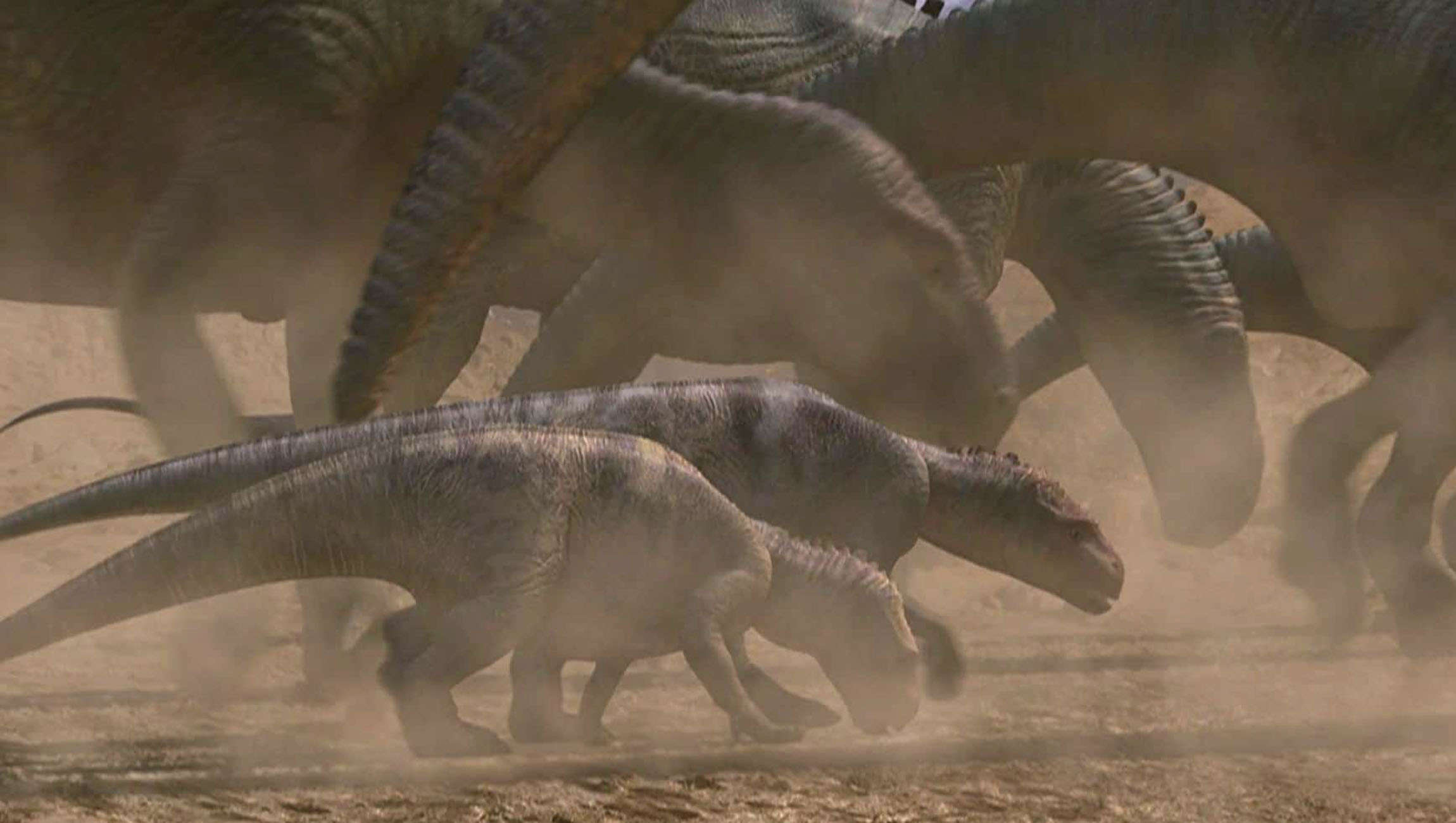Create a free profile to get unlimited access to exclusive videos, sweepstakes, and more!
Paleo-weirdness revealed by the oldest vertebrate footprints ever found in the Grand Canyon

Before any dinosaurs ever hatched, a proto-reptile scurried across the sand dunes that would eventually be the Grand Canyon, leaving behind tracks that were preserved well enough to survive 313 million years. Then a rock fell and humans found them.
These footprints that seem to take steps through time are not just the oldest vertebrate tracks found on the Grand Canyon (which is a fossil haven), but also some of the oldest tracks left by an animal that is though to have laid shelled eggs. They are also the oldest evidence of a vertebrate walking in sand dunes. Whatever this creature was, its tracks also show a sideways pattern not previously found in the fossilized trackways of prehistoric tetrapods. This is the earliest evidence of this kind of walk in vertebrates—and it’s weird.
"The environment when these animals walked up a sand dune was a coastal plain adjacent to a marine embayment, on the west coast of an island that occupied most of what is now Arizona,” paleontologist Stephen M. Rowland of UNLV, who co-authored a study recently published in PLOS ONE, told SYFY WIRE.
The tracks are evidence of a lateral-sequence gait, which has not previously been seen in the fossilized footprints of tetrapods. When an animal walks this way, the front and hind foot on one side move together, followed by the front and hind foot on the other side, as opposed to how most tetrapods move opposite front and hind feet as they wander around. You can even catch cats and dogs using this gait when they walk very slowly. Gaits are thought to have evolved to minimize the energy needed to travel a certain distance. Walking through sand needs more energy because of the higher resistance, and the Grand Canyon is vast. It must have still been vast even when it was an endless stretch of sand dunes hundreds of millions of years ago.
"The coastal sand dunes provided a good habitat for dune-dwelling animals," Rowland said. "The tracks described in the our paper are the earliest evidence on Earth of vertebrate animals walking in sand dunes. They are among the earliest tracks of amniotes."
What could have left these footprints? The creature that tracks belonged to remains unknown. It is an ichnotaxon, an organism whose bones have never been found but has left behind tracks or some other fossilized imprint as proof of its existence. What can be inferred from the little it gives away about itself is that it was a tetrapod with five toes on each foot. It is being tentatively assumed that the trackmaker belonged to the ichnotaxon Chelichnus, which was probably a proto-reptile with feet similar to a tortoise. It could have also been a therapsid, one of a group that includes ancestral mammals.
The mystery creature is also thought to have laid shelled eggs. That would make it an amniote, or an animal that hatches from eggs that are laid or grows from a fertilized egg inside the body. Tetrapod evolution really took off in what were tropical forests from about 360 to 286 million years ago. Some of the first tetrapods that transitioned from water to land were finally freed from having to lay their eggs in the water, where they would at more risk of exposure to predators. The new trackway is proof that some of them (whether or not they were were reptiles) could adapt to environments that went dry seasonally, which made their descendants capable of adapting to deserts or sand dunes off the coast.
"We don't know for sure that these animals were reptiles," Rowland said. "A few million years before these animals lived, reptiles had diverged from synapsids (who are our ancestors). The feet of early synapsids and early reptiles are very similar, so we can't tell for sure whether the animals that made these tracks were reptiles or synapsids."
The problem until now was that the oldest footprints found in sandstones and similar types of sedimentary rocks are eight million years younger than the ones more recently unearthed. When rocks fell by chance in the Manakacha Formation of the Grand Canyon, two of them revealed vertebrate trackways, with the more obvious one showing a lateral-sequence gait. The trackways may be all that is left of two separate species, since the gaits used to once climb a sloping dune show obvious differences. What they don't give away is what kind of creatures they were.
"If these animals were reptiles, then they could be ancestors of modern snakes, lizards, and crocodiles," said Rowland. "If they are synapsids, then they could be our ancestors."
When studied further, these tracks could whisper from the past about how early reptiles, maybe early tetrapods in general, evolved. Whether one animal was ahead of the other evolutionarily remains unknown.
Just one question. Is this going to attract more tourists?


























